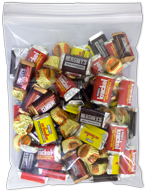Before I was handed the keys the very first time I drove, I had to know how to change a tire, check the fluids of a car, and even change the oil and sparkplugs. But with dad having been a mechanic and truck driver for the majority of my life and before, those were things that I pretty much already knew, but dad had fun testing me. He didn't want me to be stuck on the side of the road and depending on someone to stop and help (hardly anyone had cell phones when I was 15).
Even in today's world with technology in your hand, you still need to know how to change a tire. What if no one is available or you have no cell signal? Even if you do have service, do you really want to wait 2 hours for someone to change your tire when you can have it done in just a few minutes?
We actually had a blow out on the way back from Charlotte, NC last week on the interstate. I could have changed it, but my MIL and I watched traffic while my husband ad FIL changed it- in like no time!
It is really simple- and it won't hurt to practice a little. Having that skill can also boost your confidence a bit!
First things first- periodically check your tires and your spare. If there is a problem take care of it ASAP. You should always have a jack, lug wrench, fully inflated spare, and your vehicle owner's manual. It would also be a good idea to get some wood wedges put them in your trunk.
How to change a tire:
1. As soon as you realize that you need to pull off to change a tire, turn your hazard lights on. Not only will it let the other drivers know there is an emergency and to watch out for you and bring attention to you being on the side of the road. Leave them on until you are ready to get back on to the road.
2. Find a safe location to pull to the shoulder. A location where there is a long stretch of straight road and plenty of room on the side of the road is best. Try to avoid narrow areas off the shoulder and facing oncoming traffic. Keep driving slowly if you need to in order to find a safe place to change your tire.
3. Apply your parking brake. This will help minimize the risk of your car rolling while you are changing the tire. Have any passengers exit the vehicle in case it does get hit.
4. Put your wheel wedges in place. If you are changing a rear tire, put them at the front tires and put them at the back tires if you are changing a front tire. Bricks will work for this as well as long as you put them in place securely.
5. Remove your hub caps with the flat end of the lug wrench. Sometimes a special tool may be needed, but this will be stated in your owners manual.
6. Loosen your lug nuts. Do this just a little- about a 1/2 counter-clockwise turn. You may need to use your foot or all of your body weight to fight the resistance. I've had to jump on a lug wrench before to loosen them. This is so your wheel is not spinning while you are trying to loosen them. Be sure not to loosen them all the way.
7. Check your car owner's manual to see where the jack should go. Each car is different and there is usually a specific place where the metal is exposed for the jack to go. Position the jack.
8. Once the jack is in position, carefully raise your vehicle until the flat tire is about 6 inches off the ground. Never put any part of your body under the car once it is raised or while it is being raised.
9. Now you can finish removing the lug nuts. Do not lose them- put them in your pocket or inside the removed hub cap, like I do. You should be able to do this mostly by hand because you have already loosened them.
10. Remove the tire- gripping the treads, gently pull the tire straight toward you until it is free from the car. Lay it on the side so that it does not roll away.
11. Mount the spare tire- Line the rim with the lug bolts and push gently until the lug bolts show through the rim.
12. Tighten the lug nuts by hand. Once they are tightened, check each lug nut again and tighten as much as you can.
13. Lower the vehicle to the ground and finish tightening the lug nuts with the lug wrench as much as you can. Use your full body weight to ensure they are as tight as possible.
14. If the hubcap you removed will fit the spare, you can put it on. If not, stow it with the removed tire.
15. Put everything away- I always throw everything in the trunk and put it away correctly once I'm home. I like to minimize the time I'm sitting on the side of the road.
16. Check your tire pressure. If it is a full-size spare, the pressure needs to be what the vehicle manufacturer recommends. A mini spare or "doughnut" needs to have 60 psi. If you need air, slowly drive to a service station.
17. Replace or fix the removed tire as soon as you can. Spares are not meant to stay on the car- especially a mini spare. Having your tire replaced will not take long at all because they have awesome equipment like
best buy automotive equipment tire changers at shops.
18. Pat yourself on the back and smile for a job well done!
Congratulations! You did it!


